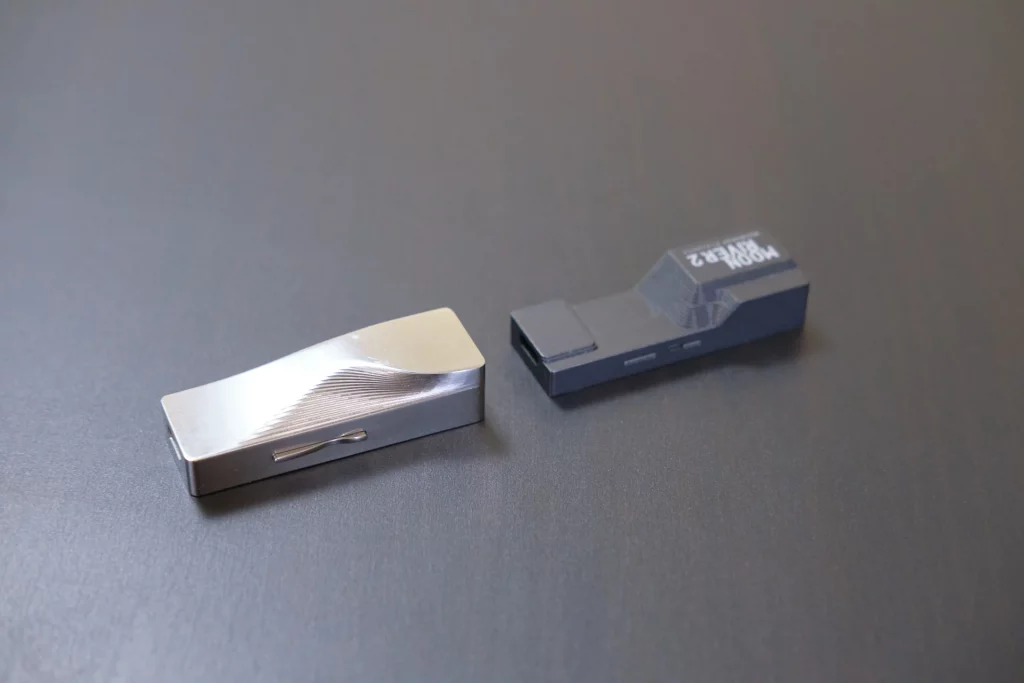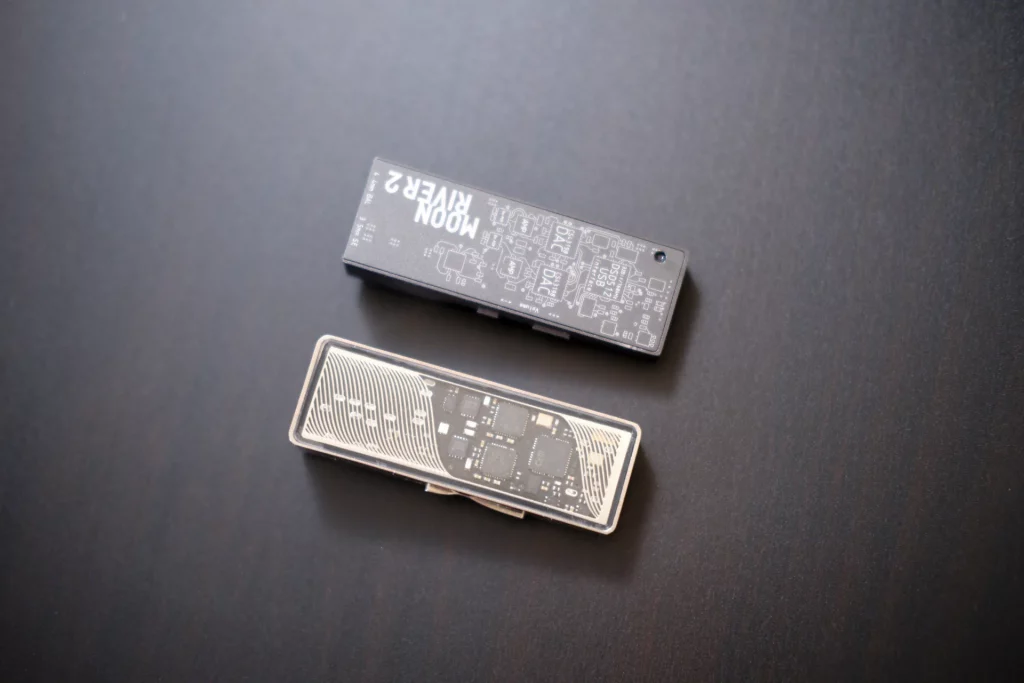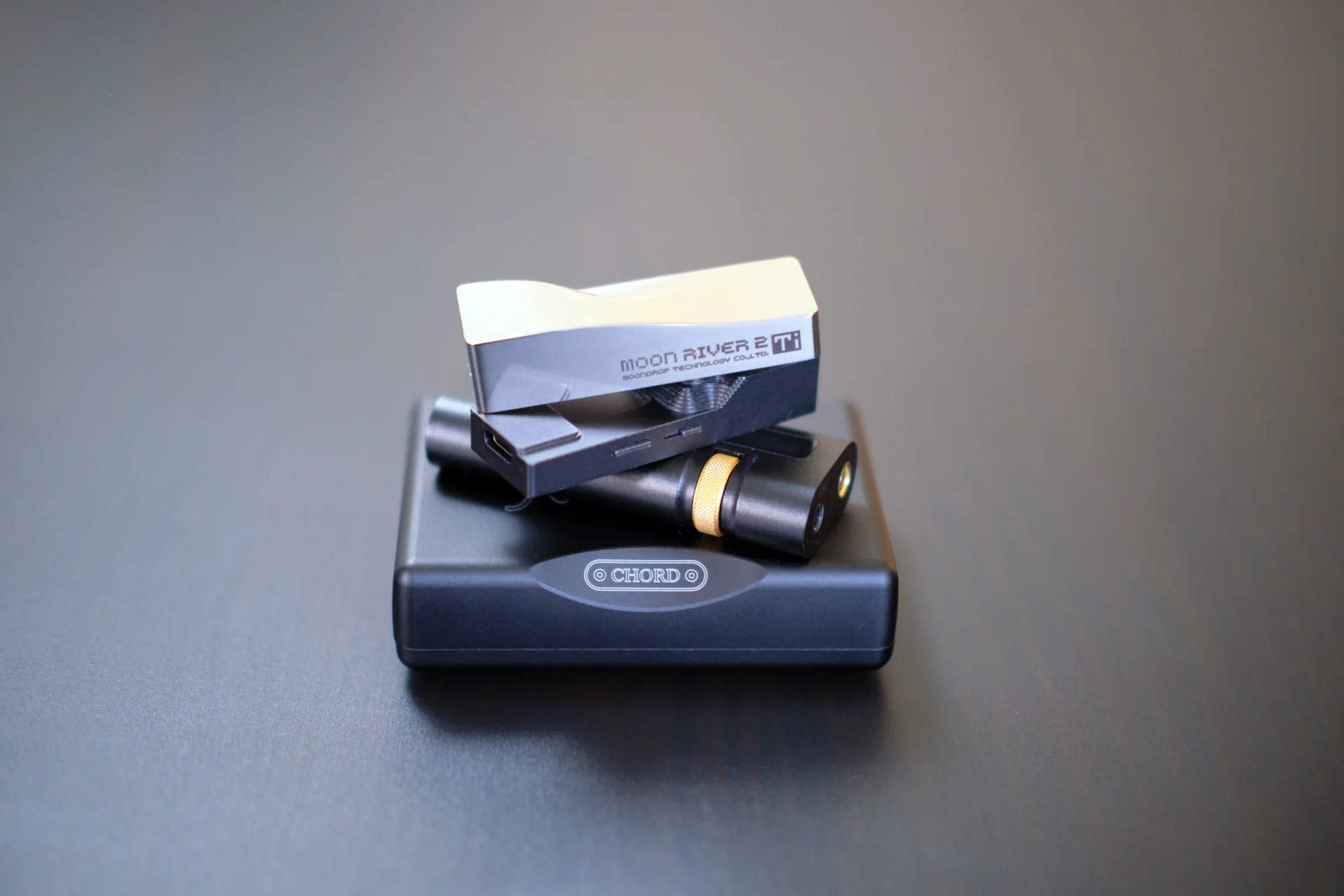Moondrop is better known for its high-quality yet affordable IEM models, but it ventured into the DAC market with its first model called Moonriver 2. There was no version one if you wonder. Moonriver 2 sold for $189 and so is its successor Moonriver 2 Ti. No price hike is nice for sure, but does Ti addition bring any improvements besides different styling? Let’s put it through the test and find out.
Features
Moonriver 2 Ti is once again based on two CS43198 DAC chips. On one side you’ll find a USB-C port and that’s our digital input. There’s a bit more versatility with analog outputs, so you can use either a single-ended 3.5mm or a balanced 4.4mm Pentaconn. Balanced out delivers twice the voltage of the single-ended one so have that in mind if you want to use more power-hungry headphones. So nothing changed on paper compared to the previous version, and I won’t bother you with specs. There is a table below the article where you can find all the numbers.
While the original Moondrop Moonriver 2 was carved out of aluminum, Moonriver 2 Ti is made of titanium. It sure looks cool and sounds more premium but I had no complaints about the original either. I noticed that the new version is weightier and official specs confirmed it. Still, it’s not that the Ti version is particularly weighty at 30 grams, it’s more that the original was super lightweight at only 17 grams. The design is still quite unusual and quirky, but I like it. Buttons are functional and easy to press, but the feel is somewhat clunky. I haven’t noticed that influencing usability in any way so it doesn’t really deduct much from the overall experience.
Finally, when it comes to the file support things look great. Both hi-resolution PCM up to 384kHz and DSD up to DSD256 are supported. MQA unfolding is not onboard but most of you are probably familiar with where I stand regarding MQA compression (yes, some of you think it is not compression and that I didn’t do my homework well, but I assure you it is and I did).
Sound
I’ve put Moondrop 2 Ti through its paces connected both to headphones or an external amplifier. When headphones are used, this DAC sounds very muscular for its size. Still, this is not a call to pair it with power-hungry cans. Like every portable DAC of this size, it will not be up to the task of driving very high-impedance headphones that require high-voltage outputs to come alive. But if you stick to more reasonable pairings, this dongle has plenty to be proud of.
Tonally, we’re talking about a well-balanced sound. Moonriver 2 Ti is one of those devices that doesn’t have a particular character to it. I wouldn’t call it bassy, because the bassline is full but fast and grippy too. It never really calls for attention. There are plenty of details to be picked up from the recording, but the sound is not high-frequency oriented or bright either. Everything in between sounds clean and informative too, but unlike its predecessor Moonriver 2, the Ti version doesn’t feel midrange-centric. The midrange is not as forward sounding, so vocals and instruments have better depth and spacing. Highs feel more extended and smoother too.
Moondrop Moonriver 2 Ti has great soundstaging abilities. All instruments have great separation and layering, while the tone decay in time is clear and easily observable. This DAC simply creates an uncluttered soundstage that breathes with space and air. I don’t recall any other DAC dongle of this price achieving it to this degree.


The dynamics are also great, making this one of the liveliest-sounding DAC dongles, with a great sense of rhythm and pace. Sure, it can’t compete in terms of grunt and slam with bigger desktop products, but as far as portables go it has nothing to be ashamed of.
Lastly, as it was the case with the original Moonriver 2, the Ti version also sounds its best when using a balanced output. Balanced connection lifts the overall level of sound fidelity a notch or even two compared to already capable SE out. Because of this, I strongly recommend to any buyer to use a balanced connection if possible.
Comparisons
Moondrop Moonriver 2 was a great DAC on its own, but Ti is just better. It brings a cleaner and clearer sound signature, with a tidier bassline and better soundstaging. Given that the price has remained the same, this is a fantastic upgrade from Moondrop.
Shanling UA5 costs slightly more and has more settings that you can play with. UA5 outperformed the original Moonriver 2 by a small margin, offering warmer, fuller, yet slightly more resolving sound. But Ti as mentioned above offers noticeably improved sonics that are blasting past UA5, making it sound ever so slightly hazy and cluttered in a direct comparison. To cut it short, Moonriver 2 Ti offers better performance at a lower price.
Conclusion
Moondrop did a great job with its first DAC, and I didn’t expect its successor to be this big of an improvement. It looks exactly the same on paper, but it performs noticeably better while keeping the same price tag. The original was already among my highly recommended products, but this one is a true no-brainer.
| MOONDROP MOONRIVER 2TI – CHARACTERISTICS |
|
DAC chip: 2 x CS43198
|







How does it stack up against the Questyle M15i?